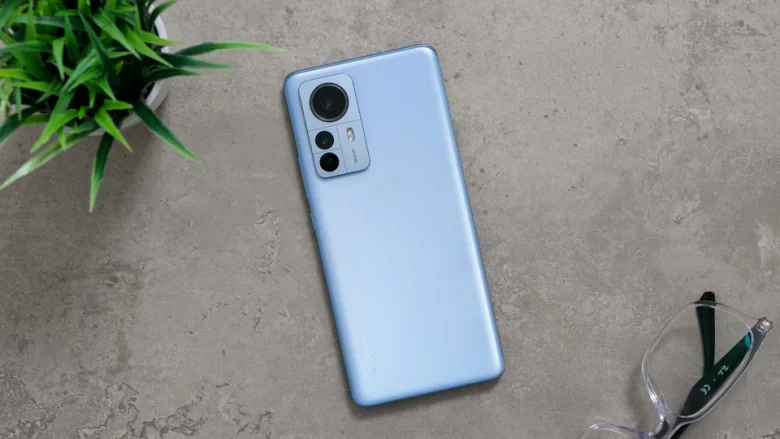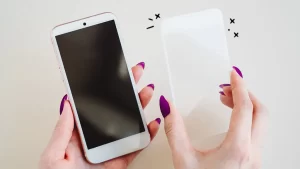The first thing you need to do before buying a new smartphone is to make a list of your needs and wants. This means thinking about how you use your phone every day, whether it’s for work, entertainment, or both. Are you looking for a phone with a great camera, or do you value a long battery life? You may need a large screen for watching movies, or a powerful device for playing games. Knowing what you’ll be using your phone for most of the time will help you focus on features that fit your lifestyle and ensure you get a phone that really meets your needs.
1. Make a Spending Plan:
When looking to buy a new smartphone, you need to set a budget. Smartphones come in many different price ranges, from cheap to expensive with lots of extra features. Decide how much you’re willing to spend, and try not to overdo it. Remember that more expensive doesn’t always mean better or better value. There are plenty of mid-range phones that work well, have great features, and cost less. Setting a reasonable budget will help you narrow down your choices, stay within your budget, and still find equipment that meets your needs.
2. Choose the Best Operating System:
Another important thing to consider when buying a smartphone is whether to go with Android or iOS. Android gives you more ways to customize your phone and a wide variety of devices with different features and prices. iOS, on the other hand, gives you more features and makes it easier to connect to other Apple products, which is useful if you already own other Apple products. Since each operating system is different, you should consider which one best suits your needs and how you want to use your smartphone.
3. Assess the Quality of the Camera:
For many people, the camera is one of the most important parts of a smartphone. When assessing the quality of a camera, don’t just look at the number of megapixels. Also consider the aperture size, sensor quality, and additional features such as optical image stabilization and advanced software enhancements. A good camera should perform well in different lighting conditions and have features that allow you to take great photos. Whether you’re an avid photographer or just want to take quick snaps, a good camera can enhance your smartphone experience.
4. Check the Battery Life:
The battery life of your smartphone is very important to ensure that it can handle your daily tasks without having to charge it all the time. Consider the battery size (measured in milliamps or mAh) and look for a model with a battery life that matches the way you use your phone. Typically, phones with larger batteries will last longer on a charge. But screen-on time and power-saving components also play a role. Features like fast charging and wireless charging also make things easier, as you can quickly charge your phone when you need it.
5. Processing Speed and Capabilities:
A smartphone’s processor and RAM have a lot to do with how well it performs. Choose a phone with a powerful processor and enough memory to run smoothly and handle heavy workloads. For intensive gaming, multitasking, and active applications, you’ll need a powerful processor and lots of RAM. If you only use your phone occasionally, a mid-range processor and a decent amount of RAM may be sufficient. Make sure your phone meets your performance needs by looking at how you use it.
6. Screen Size and Quality:
The size and quality of your smartphone screen have a huge impact on the way you see things. Look for a phone with a high-quality screen and clear display content. OLED and AMOLED screens have bright colors and deep blacks, making watching and using movies much easier. Consider the screen size based on how you watch movies, play games, or use your phone with one hand. A smoother scrolling experience can also be achieved through features like faster update speeds. Choose a screen that suits the way you use your phone.
7. Storage and Growth Potential:
It’s important to consider how much storage space your device has, especially if you want to store photos, videos, and apps on it. Smartphones come with different amounts of built-in storage, usually between 64GB and 512GB or more. If you have a lot of files, opt for a storage option with more space. Some phones also allow you to add more storage using a microSD card, which is a cheap way to expand the capacity of your device. If you don’t have expandable storage, make sure that the internal storage is sufficient for your needs so that you don’t run out of space.
Conclusion:
When you’re looking for a new smartphone, there are many different things that you need to carefully consider to ensure that you buy one that suits your needs and tastes. You can make an informed choice by understanding your needs, setting a budget, choosing the right operating system, and checking important features such as camera quality, battery life, and performance. By considering factors such as screen quality, storage space, durability, and software support, you can find a phone that will bring you happiness in the long run. By making a list of what you want and researching your options in depth, you can ensure that you choose a smartphone that suits your needs and gives you the most bang for your buck.
FAQs:
1. What should I consider before buying a new smartphone?
When buying a new smartphone, you should consider your needs (such as camera quality, battery life, and performance), your income, operating system (Android or iOS), and features such as display quality, storage, and durability. Also, consider your phone’s software support and any additional features that could enhance your experience.
2. How do I determine how much I can spend on a smartphone?
Figure out how much you can spend on a smartphone and make sure it has all the features you need. This is called budgeting. You should consider how often you want to buy new phones and whether you prefer a high-end model or a cheaper one. Setting a reasonable budget will help you find a phone that’s worth your money.
3. What are the differences between Android and iOS operating systems?
There are many different Android devices with different features and ways to customize them. iOS, on the other hand, is much more controlled and plays nicely with the rest of the Apple world. Android offers more customization and a wider range of devices to choose from, while iOS is more consistent, especially if you already own other Apple products.
4. How important is the camera when choosing a smartphone?
If you take a lot of photos or videos, the quality of your camera is very important. Think about extra features like megapixel count, aperture size, camera quality, and optical image stabilization. You can find out if your phone’s camera meets your photography needs by reading reviews and looking at sample photos.
5. What aspects of battery life should I consider?
When evaluating battery life, you should look at the battery charge (measured in milliamp hours, or mAh) and see if the phone has features like fast charging or wireless charging. Typically, phones with larger batteries will last longer on a charge. However, there are other factors at play, such as how power-efficient the phone is. Look for a phone with enough battery life to handle your daily activities.




